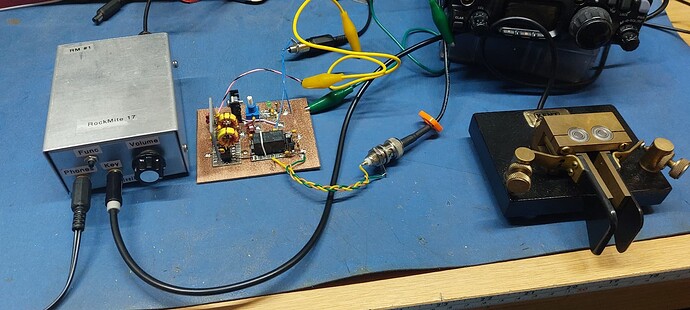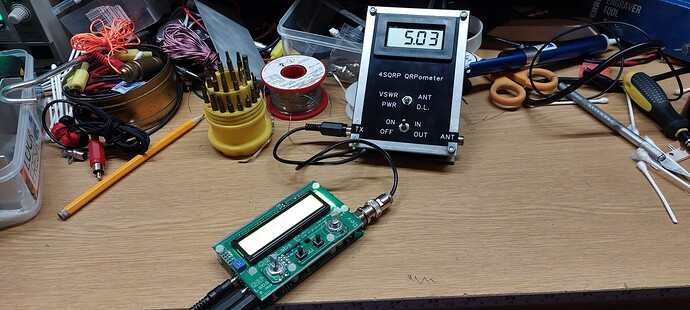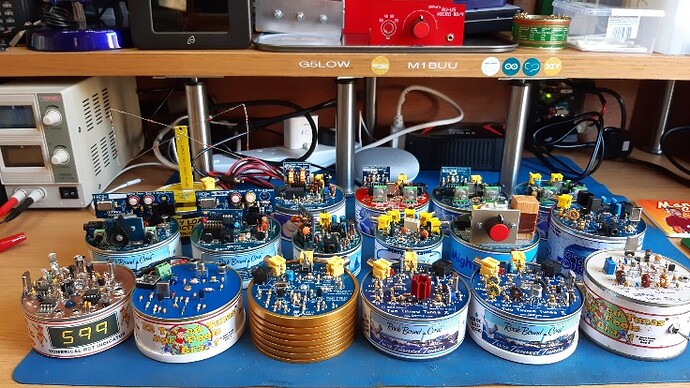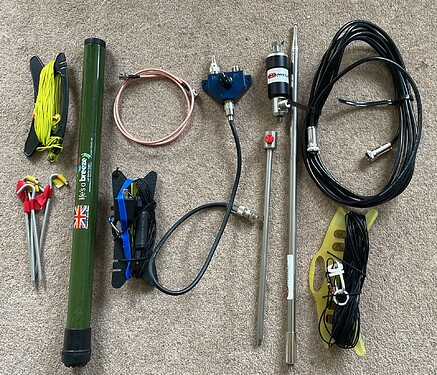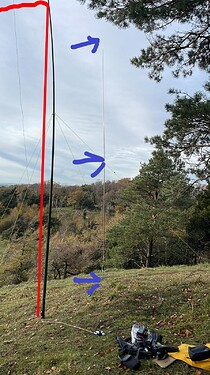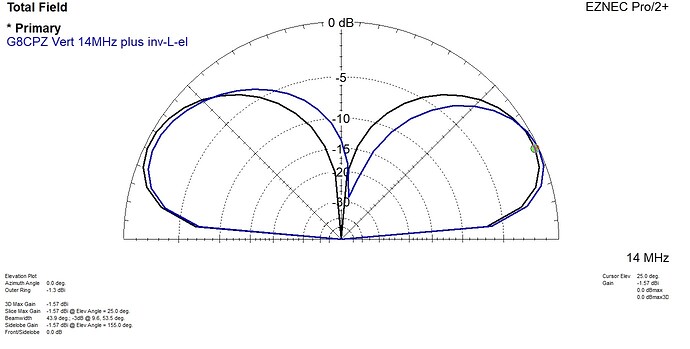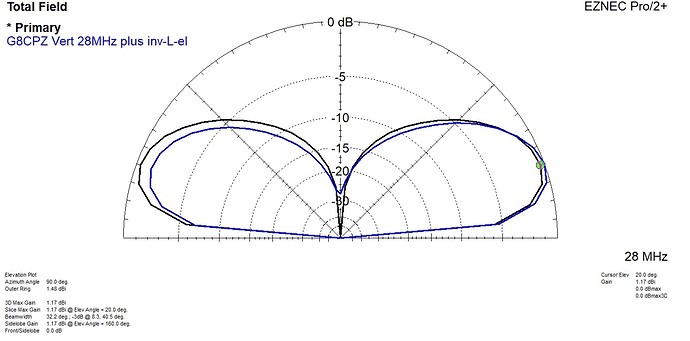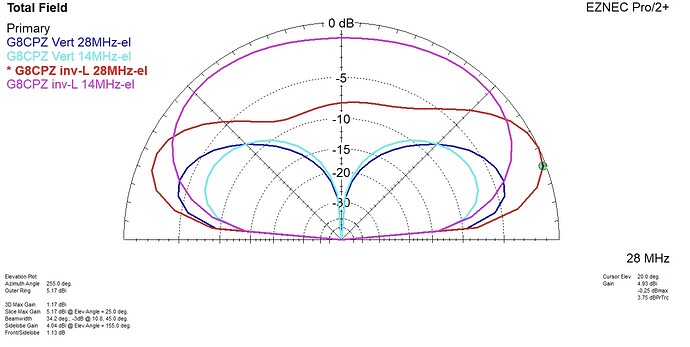Yes, head phones - I got some El Cheapo wrap-round-the-neck lightweight ones from Amazon to use with my G90. On most of the summits I visit, there’s nary a soul to be seen, but wind can sometimes be a problem. A good strong peppermint can help with the latter…
I’ve been trying to take part in the G-QRP Club activity sessions on Wednesday and Sunday evenings. The idea is just to get on the air at a coordinated time to try to promote QRP QSOs and generally increase activity.
I like to put different radios on the air but I don’t have a shack, so I have been operating /portable style (my SOTA experience helps me out there!). One evening I decided to run my home brew Tuna Tin 2. To help boost my signal a bit I connected up my 10dB tuna can amplifier. I’d forgotten that the 10dB amp doesn’t include an RX mute switch. I have an RF sensing RX/TX switch (Tuna Helper) which swaps the antenna paths and also provides a PTT signal to enable receiver muting. I usually run the Tuna Helper, but the 10dB amp can also handle RX/TX switching, so I opted to run that instead. I managed a couple of QSOs on 40m but the unmuted receiver was loud during transmit. I hadn’t realised just how loud it was and my ears were ringing for a day or so afterwards. I realise in hindsight how stupid I had been. Unfortunately I can’t think of an easy way to implement a mute switch to the amp as all of the contacts on the relay are being used.
G-QRP activity session from the park at night!
The 10dB amplifier can be wired for a transceiver instead of separates and that’s my usual use case, as I run a RockMite.
I have home brewed a 10dB amp which I’m hoping to get finished for the Transatlantic S2S event. The amp works, it just needs putting into a case. I have a tin, I just need to get the holes drilled! I had three QSOs from the work bench on 17m with a temporary dipole strung up in my tiny garden.
For 15m I have re-engineered a QCX-mini 30m for 21MHz (prompted by a discussion with Andy @MM0FMF). The QCX-mini 15m is yet untested.
73, Colin
I don’t think I have the capacitors for the 15m conversion in the shack and my laptop is intermittent so 15m updates have been pushed down the list.
The simplest solution might be to piggyback a small relay onto the existing one if the switching circuit for the relay has enough ummpf. Alternatively maybe add a simple transistor switch in parallel with the relay coil to mute the receiver? May need a diode to isolate the circuit. When there’s a will there’s a way.
Perhaps a pair of back to back diodes across the audio output to limit the volume?
Being a complete dummy at electronics, I’m always grateful when the experts post details of their home-brew projects - it really does help those like me to get at least an insight into these things. Who knows - some of it may stick! … well, hope springs eternal, as they say…
The receiver has mute built in. A simple toggle switch would work I guess. Thanks for the suggestions, a transistor switch might work. I think adding another relay would be a bit overkill.
Careful, there is a risk of tunatus.![]()
Apologies to those who suffer from tinnitus, I know it can be horrible. ![]()
Add AI and they will take over the World! An amazing collection.
That chameleon is not band specific, correct? I have a hard time believing that the LNR won’t be better given the reflected power that will occur, with some bands substantially worse than others, unless you need a band that is not available on the LNR or are running a lot more power on on the chameleon.
I’m working today and can’t stop thinking about @M1BUU. Can’t figure out why?
That’s right, it isn’t (and has a lossy broadband matching transformer). The MPAS Lite UM claims 1.8 MHz through 54.0 MHz but I use it for 30m to 10m; it’s tolerable on 40m. I like it for its robustness (in high winds), speed of deployment and smaller footprint on busy summits.
Funny you should mention that because I intend to take both antennas and an antenna switch to my target SOTA hill G/LD-058 before the TA S2S event to do a A vs B receive-only comparison specifically for 10m and 15m. I used the LNR EFHW (as a sloper) recently getting US chasers during 25 mins on 10m and 8 mins on 15m with my 10W of CW.
I’ll try it as an inverted-L for the test. G/LD-058 may be the smallest SOTA summit in England but it’s one of the very few in my region that has trees (for the far end of my inverted-L), overlooks the sea to the NW (great circle route to N. America) and the parking is only 10 minutes drive from home.
It’s the battle of the antennas this afternoon on Arnside Knott. In the right corner the contestant is the robust & tough Cha MPAS Lite vertical. In the left corner is lean but feisty LNR 40/20/10 EFHW sporting an inverted-L on a 6m pole today.
The winner will go back to the same spot Saturday afternoon for the Transatlantic S2S event.
The match location was not ideal, good DX take-off (and great sea views) to SW, W and NW but not on other bearings.
On Round 1 (10m) first to come out swinging was the EFHW landing some great punches with a clear 2-3 S-points ahead of the MPAS on most signals. This is not surprising as the 40/20/10 EFHW is optimized for 10m.
Very different on Round 2 (20m), going head-to-head, a lot of trading punches and duking it out, no clear winner, so a tie I would say. Maybe that’s because the MPAS telescoping whip (17’, 5.2m long) is optimized for a quarter wavelength on 20m and I use two wire counterpoises.
Long overs are good for comparisons: you get the chance to switch to the other antenna, use the ATU to load up on a nearby frequency and QSY back before the over is, er, over. There wasn’t enough activity on 18m and 15m to do this properly and there was no obvious winner. Not surprising as the EFHW isn’t designed for these bands and the KX2 ATU was doing its best for both antennas.
So, there was no knock-out punch and the EFHW won on points (S-points) for 10m. It will go in the rucksack for Saturday afternoon.
Red inverted-L EFHW, blue MPAS vertical
On the other hand, it shows the Cha MPAS Lite as a good allrounder for most bands, and when working 30-15m it’s done me proud many times when I needed a robust small-footprint antenna for a quicker deployment especially in very windy conditions.
Nicely done. How long was the vertical section on your inverted L? I have found that configuration to have good utility.
I am curious what everyone is setting up for antennas.
The EFT10-20-40 is the shorter of my two LNR EFHWs at 12.5m long, so ~6m (almost) vertical on the pole and ~6.5m (almost) horizontal via ~2m of cord to a tree branch.
Andy,
What was the horizontal distance between the 2 antennas?
73 tks, Heinz
About 3m. I would have preferred to space them farther apart but I was constrained by trees behind me (the top of the EFHW pole was close to a tree branch) and a popular footpath in front (I had 3 or 4 groups of curious walkers ask me what I was up to). The horizontal section of the EFHW ran in the opposite direction from the vertical.
I was interested in whether and when, how strong, roughly, the mutual influence of the two antennas is.
With EZNEC it can be seen that the radiation diagrams of the inv-L show no influence from the nearby vertical antenna at 14 and 28 MHz.
The radiation diagrams of the vertical antenna, on the other hand, show a slight influence that is insignificant in practice.
Regarding antenna gain at an elevation angle of 20 degrees, the additional gain of the inv-L (broad side of the antenna wire) is approx. 3 dB at 14 MHz and approx. 3.7 dB at 28 MHz.
Good luck on Saturday then.

